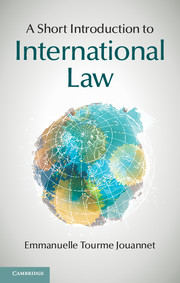Introduction
Published online by Cambridge University Press: 05 February 2015
Summary
International law is an international policy instrument. It is a set of rules, discourses and techniques that its subjects and actors use to regulate their relations and accomplish certain social ends. International law has its own culture and history. It has evolved over several centuries to reach its current form, and is: a fundamental process for regulating and channelling international violence; an essential common language; an instrumental technique in the service of states and of all the actors of international society. It is a promise of peace. In all of this, its force of attraction is very real indeed. But ever since it emerged in the modern era, international law has also been a part of a profoundly unequal international society in which it nurtures as much violence as it appeases. Far from being a straightforward neutral legal technique, it is, and always has been, the projection upon the international stage of the values and interests of international society’s main players, at the same time being used by groups resisting that dominant order. In this respect, it is intrinsically ambivalent. It is simultaneously an instrument of domination and an instrument of emancipation for the subjects and actors who use it. It is as much the sword of the mighty as it is the shield of the meek.
International law has changed considerably since 1945, and its many-faceted development contrasts starkly with the uniformity of classical law. We are witnessing a contemporary multiplication of the sources, norms, operators and users of international law, while the role of sovereign states, until now the foundation of this law, is becoming decidedly less absolute. It is now the law of an international society that emerged from the Second World War and has become a post-colonial and post-Cold War society. These three episodes account for some of the most essential shifts it has undergone. In particular, the classical representation of international law laying down the rules to govern a mosaic of juxtaposed sovereign states is no longer tenable and no longer fits contemporary international law. Sovereignty has weakened, and international institutions, individuals and private economic actors are ever more emancipated in our globalised world. International law is changing and its traditional dividing lines are being redrawn to accommodate new structures, areas of regulation and intervention, subjects, content and scope.
- Type
- Chapter
- Information
- A Short Introduction to International Law , pp. 1 - 3Publisher: Cambridge University PressPrint publication year: 2014



